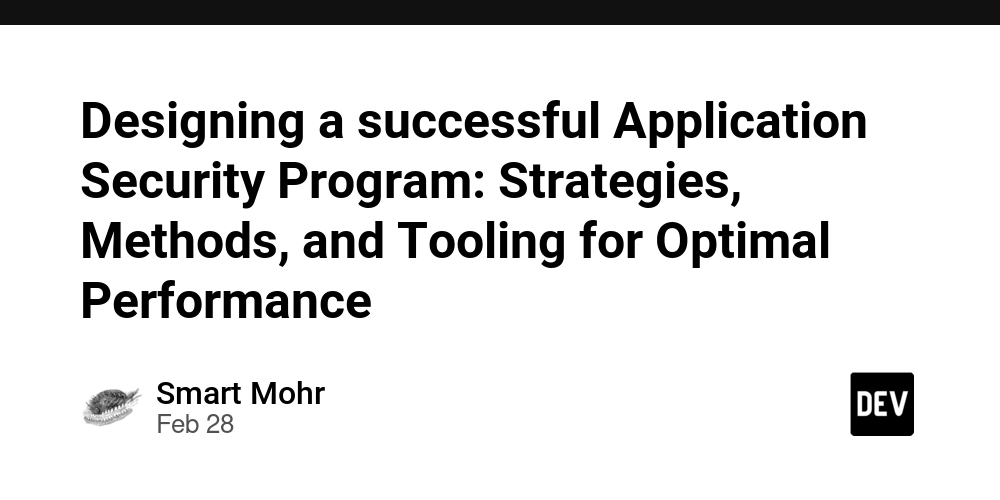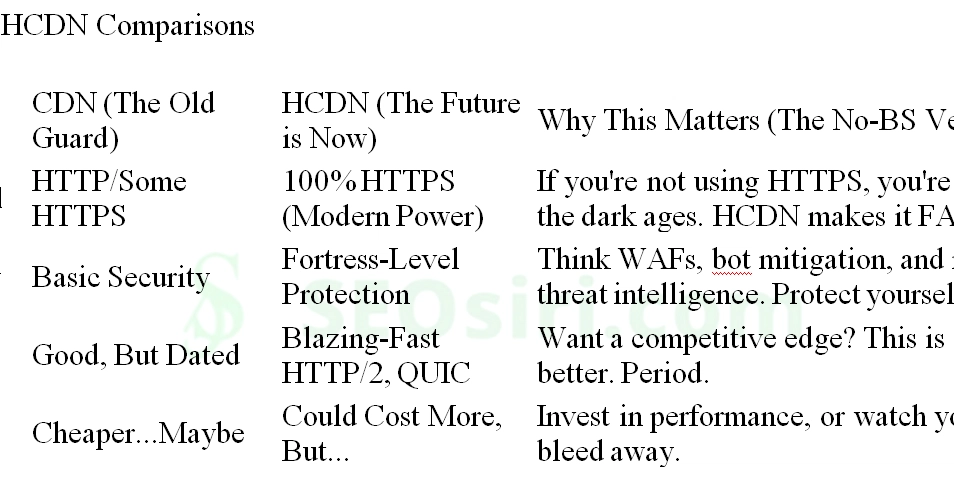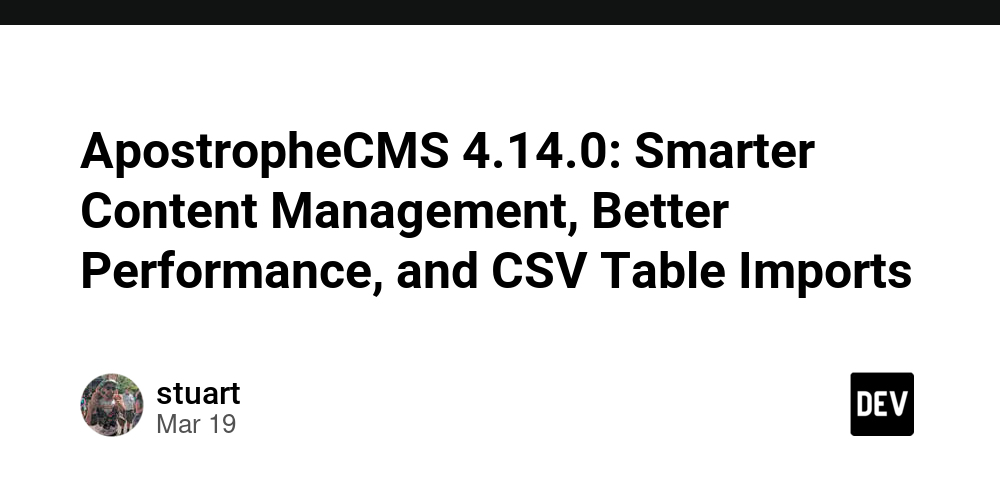Designing a successful Application Security Program: Strategies, Methods, and Tooling for Optimal Performance
To navigate the complexity of modern software development requires a thorough, multi-faceted approach to application security (AppSec) that goes far beyond just vulnerability scanning and remediation. A holistic, proactive approach is needed to incorporate security into every stage of development. The rapidly evolving threat landscape and the increasing complexity of software architectures are driving the necessity for a proactive, comprehensive approach. This comprehensive guide explains the key components, best practices and cutting-edge technologies that underpin the highly efficient AppSec program that empowers organizations to fortify their software assets, reduce risks, and foster an environment of security-first development. The success of an AppSec program is based on a fundamental change in the way people think. Security should be viewed as a vital part of the development process, not an extra consideration. This paradigm shift necessitates close collaboration between security personnel operators, developers, and personnel, removing silos and instilling a conviction for the security of applications they create, deploy, and manage. DevSecOps allows organizations to incorporate security into their processes for development. It ensures that security is considered throughout the process beginning with ideation, development, and deployment up to continuous maintenance. Central to this collaborative approach is the formulation of clear security policies that include standards, guidelines, and policies which establish a foundation for secure coding practices vulnerability modeling, and threat management. The policies must be based on industry best practices, such as the OWASP Top Ten, NIST guidelines as well as the CWE (Common Weakness Enumeration) in addition to taking into consideration the individual requirements and risk profile of the particular application and business context. By formulating these policies and making them easily accessible to all stakeholders, organizations can ensure a consistent, standardized approach to security across all applications. It is essential to fund security training and education programs that will assist in the implementation of these policies. These programs should provide developers with the knowledge and expertise to write secure software and identify weaknesses and follow best practices for security throughout the process of development. Training should cover a range of areas, including secure programming and the most common attack vectors, in addition to threat modeling and principles of secure architectural design. Organizations can build a solid base for AppSec by creating an environment that encourages ongoing learning, and giving developers the resources and tools they require to incorporate security into their daily work. discover security tools Organizations should implement security testing and verification methods as well as training programs to detect and correct vulnerabilities before they can be exploited. This is a multi-layered process that encompasses both static and dynamic analysis techniques in addition to manual penetration testing and code reviews. In the early stages of development, Static Application Security Testing tools (SAST) can be utilized to discover vulnerabilities like SQL Injection, Cross-SiteScripting (XSS) and buffer overflows. Dynamic Application Security Testing tools (DAST) on the other hand, can be utilized to test simulated attacks against running applications to detect vulnerabilities that could not be detected through static analysis. These tools for automated testing can be extremely helpful in the detection of weaknesses, but they're not a panacea. Manual penetration testing by security professionals is essential for identifying complex business logic weaknesses that automated tools may miss. Combining automated testing and manual validation, organizations can have a thorough understanding of their application's security position. They can also determine the best way to prioritize remediation activities based on level of vulnerability and the impact it has on. agentic ai in appsec Companies should make use of advanced technology, like machine learning and artificial intelligence to enhance their capabilities for security testing and vulnerability assessment. AI-powered tools can analyse large quantities of code and application data and spot patterns and anomalies that could indicate security concerns. These tools can also be taught from previous vulnerabilities and attack patterns, continually improving their ability to detect and prevent emerging threats. Code property graphs are a promising AI application that is currently in AppSec. They are able to spot and repair vulnerabilities more precisely and efficiently. CPGs are an extensive representation of an application’s codebase that captures not only its syntactic structure, but additionally complex dependencies and relationships between components. By l

To navigate the complexity of modern software development requires a thorough, multi-faceted approach to application security (AppSec) that goes far beyond just vulnerability scanning and remediation. A holistic, proactive approach is needed to incorporate security into every stage of development. The rapidly evolving threat landscape and the increasing complexity of software architectures are driving the necessity for a proactive, comprehensive approach. This comprehensive guide explains the key components, best practices and cutting-edge technologies that underpin the highly efficient AppSec program that empowers organizations to fortify their software assets, reduce risks, and foster an environment of security-first development.
The success of an AppSec program is based on a fundamental change in the way people think. Security should be viewed as a vital part of the development process, not an extra consideration. This paradigm shift necessitates close collaboration between security personnel operators, developers, and personnel, removing silos and instilling a conviction for the security of applications they create, deploy, and manage. DevSecOps allows organizations to incorporate security into their processes for development. It ensures that security is considered throughout the process beginning with ideation, development, and deployment up to continuous maintenance.
Central to this collaborative approach is the formulation of clear security policies that include standards, guidelines, and policies which establish a foundation for secure coding practices vulnerability modeling, and threat management. The policies must be based on industry best practices, such as the OWASP Top Ten, NIST guidelines as well as the CWE (Common Weakness Enumeration) in addition to taking into consideration the individual requirements and risk profile of the particular application and business context. By formulating these policies and making them easily accessible to all stakeholders, organizations can ensure a consistent, standardized approach to security across all applications.
It is essential to fund security training and education programs that will assist in the implementation of these policies. These programs should provide developers with the knowledge and expertise to write secure software and identify weaknesses and follow best practices for security throughout the process of development. Training should cover a range of areas, including secure programming and the most common attack vectors, in addition to threat modeling and principles of secure architectural design. Organizations can build a solid base for AppSec by creating an environment that encourages ongoing learning, and giving developers the resources and tools they require to incorporate security into their daily work.
discover security tools Organizations should implement security testing and verification methods as well as training programs to detect and correct vulnerabilities before they can be exploited. This is a multi-layered process that encompasses both static and dynamic analysis techniques in addition to manual penetration testing and code reviews. In the early stages of development, Static Application Security Testing tools (SAST) can be utilized to discover vulnerabilities like SQL Injection, Cross-SiteScripting (XSS) and buffer overflows. Dynamic Application Security Testing tools (DAST) on the other hand, can be utilized to test simulated attacks against running applications to detect vulnerabilities that could not be detected through static analysis.
These tools for automated testing can be extremely helpful in the detection of weaknesses, but they're not a panacea. Manual penetration testing by security professionals is essential for identifying complex business logic weaknesses that automated tools may miss. Combining automated testing and manual validation, organizations can have a thorough understanding of their application's security position. They can also determine the best way to prioritize remediation activities based on level of vulnerability and the impact it has on.
agentic ai in appsec Companies should make use of advanced technology, like machine learning and artificial intelligence to enhance their capabilities for security testing and vulnerability assessment. AI-powered tools can analyse large quantities of code and application data and spot patterns and anomalies that could indicate security concerns. These tools can also be taught from previous vulnerabilities and attack patterns, continually improving their ability to detect and prevent emerging threats.
Code property graphs are a promising AI application that is currently in AppSec. They are able to spot and repair vulnerabilities more precisely and efficiently. CPGs are an extensive representation of an application’s codebase that captures not only its syntactic structure, but additionally complex dependencies and relationships between components. By leveraging the power of CPGs AI-driven tools are able to do a deep, context-aware assessment of an application's security profile and identify vulnerabilities that could be overlooked by static analysis techniques.
CPGs can automate vulnerability remediation making use of AI-powered methods to perform repairs and transformations to code. By understanding the semantic structure of the code, as well as the nature of the weaknesses, AI algorithms can generate targeted, context-specific fixes that target the root of the issue, rather than just treating the symptoms. This approach not only accelerates the process of remediation but also reduces the risk of introducing new weaknesses or breaking existing functionality.
Another aspect that is crucial to an effective AppSec program is the incorporation of security testing and validation into the continuous integration and continuous deployment (CI/CD) process. Automating security checks, and making them part of the build and deployment process allows companies to identify vulnerabilities earlier and block their entry into production environments. The shift-left security method provides more efficient feedback loops and decreases the amount of time and effort required to identify and fix issues.
For organizations to achieve the required level, they should put money into the right tools and infrastructure that can support their AppSec programs. This is not just the security tools but also the platforms and frameworks that allow seamless automation and integration. Containerization technologies such as Docker and Kubernetes play a crucial role in this respect, as they provide a repeatable and reliable environment for security testing as well as separating vulnerable components.
Effective collaboration and communication tools are as crucial as a technical tool for establishing an environment of safety and enable teams to work effectively together. Jira and GitLab are issue tracking systems which can assist teams in managing and prioritize security vulnerabilities. Tools for messaging and chat like Slack and Microsoft Teams facilitate real-time knowledge sharing and communication between security experts.
The success of an AppSec program isn't solely dependent on the technology and tools used as well as the people who help to implement the program. In order to create a culture of security, you need an unwavering commitment to leadership, clear communication and an effort to continuously improve. Through fostering a sense shared responsibility for security, encouraging open discussion and collaboration, while also providing the resources and support needed organisations can make sure that security isn't just a box to check, but an integral element of the process of development.
AI powered application security To ensure that their AppSec programs to be effective over time, organizations need to establish important metrics and key-performance indicators (KPIs). These KPIs will help them track their progress and pinpoint improvement areas. These measures should encompass the entirety of the lifecycle of an app including the amount and nature of vulnerabilities identified in the development phase through to the time it takes to address issues, and then the overall security position. By monitoring and reporting regularly on these metrics, companies can show the value of their AppSec investments, identify patterns and trends and take data-driven decisions regarding the best areas to focus their efforts.
To stay on top of the constantly changing threat landscape and new practices, businesses require continuous education and training. This may include attending industry-related conferences, participating in online-based training programs and working with outside security experts and researchers to stay on top of the most recent technologies and trends. By establishing a culture of continuous learning, companies can assure that their AppSec program remains adaptable and robust in the face of new challenges and threats.
automated security validation It is also crucial to recognize that application security is not a one-time effort and is an ongoing process that requires sustained dedication and investments. application monitoring system As new technology emerges and development methods evolve companies must constantly review and review their AppSec strategies to ensure that they remain efficient and in line with their objectives. By embracing a mindset that is constantly improving, encouraging cooperation and collaboration, as well as leveraging the power of new technologies such as AI and CPGs. Organizations can establish a robust, adaptable AppSec program that not only protects their software assets, but lets them develop with confidence in an ever-changing and challenging digital world.agentic ai in appsec









































































































































































![[The AI Show Episode 142]: ChatGPT’s New Image Generator, Studio Ghibli Craze and Backlash, Gemini 2.5, OpenAI Academy, 4o Updates, Vibe Marketing & xAI Acquires X](https://www.marketingaiinstitute.com/hubfs/ep%20142%20cover.png)



























































































































![[FREE EBOOKS] The Kubernetes Bible, The Ultimate Linux Shell Scripting Guide & Four More Best Selling Titles](https://www.javacodegeeks.com/wp-content/uploads/2012/12/jcg-logo.jpg)



![From drop-out to software architect with Jason Lengstorf [Podcast #167]](https://cdn.hashnode.com/res/hashnode/image/upload/v1743796461357/f3d19cd7-e6f5-4d7c-8bfc-eb974bc8da68.png?#)






































































































.png?#)




.jpg?#)
































_Christophe_Coat_Alamy.jpg?#)








































































































![Rapidus in Talks With Apple as It Accelerates Toward 2nm Chip Production [Report]](https://www.iclarified.com/images/news/96937/96937/96937-640.jpg)








































































































































